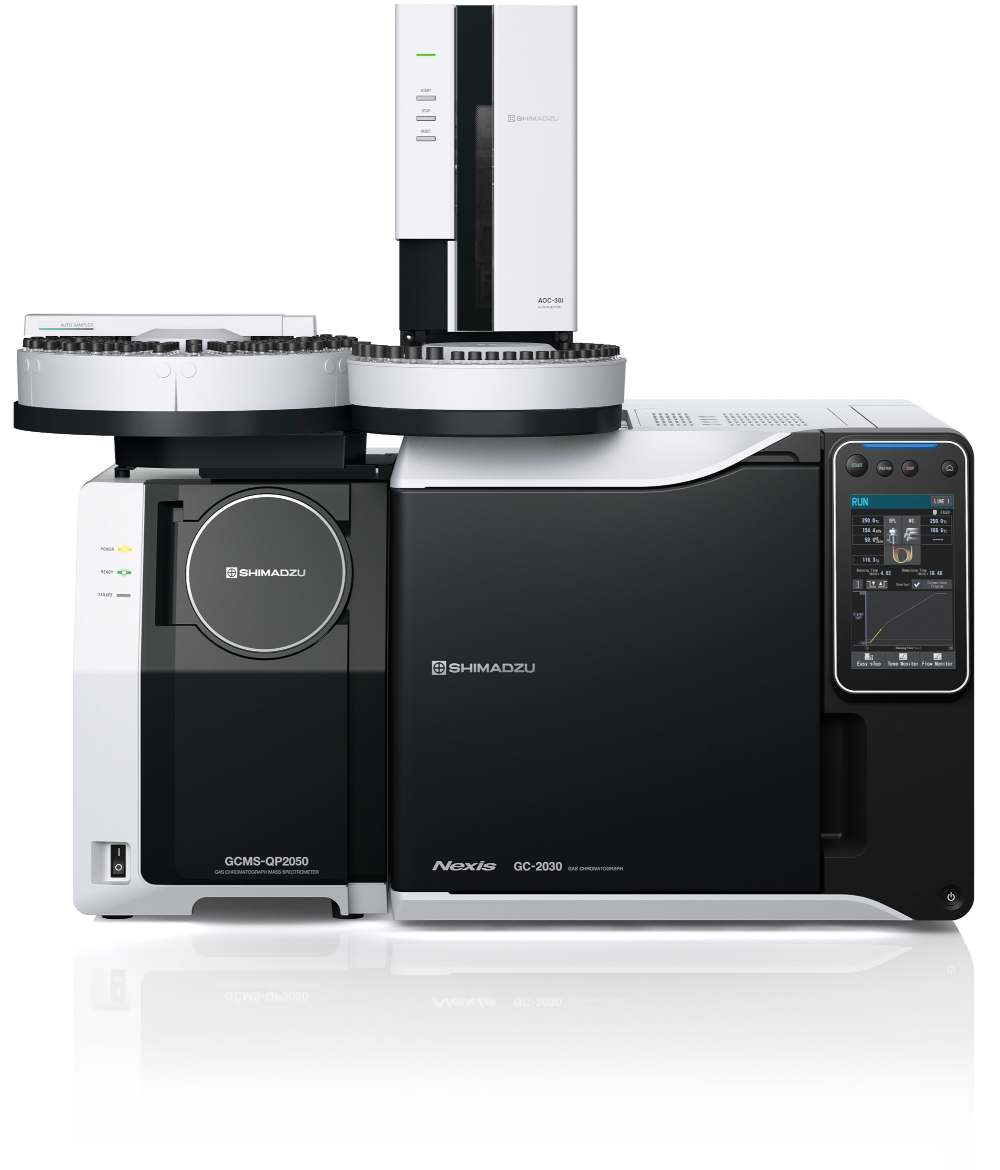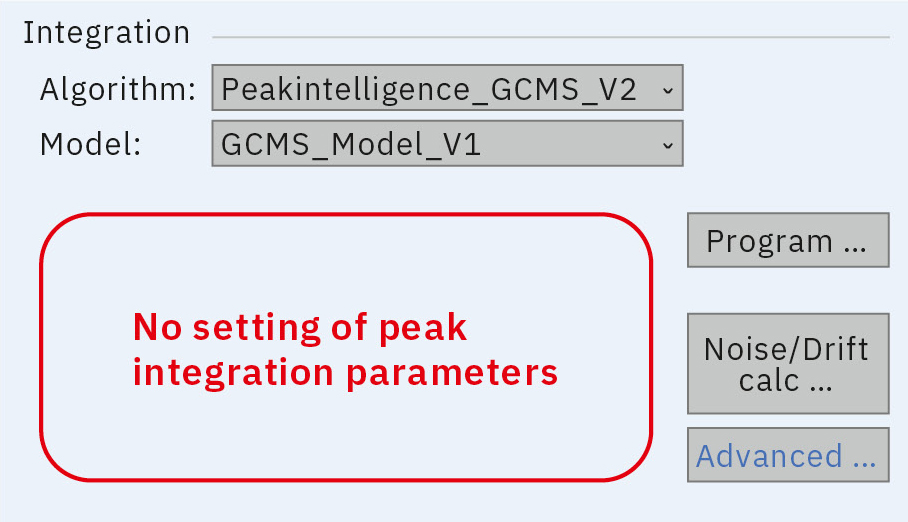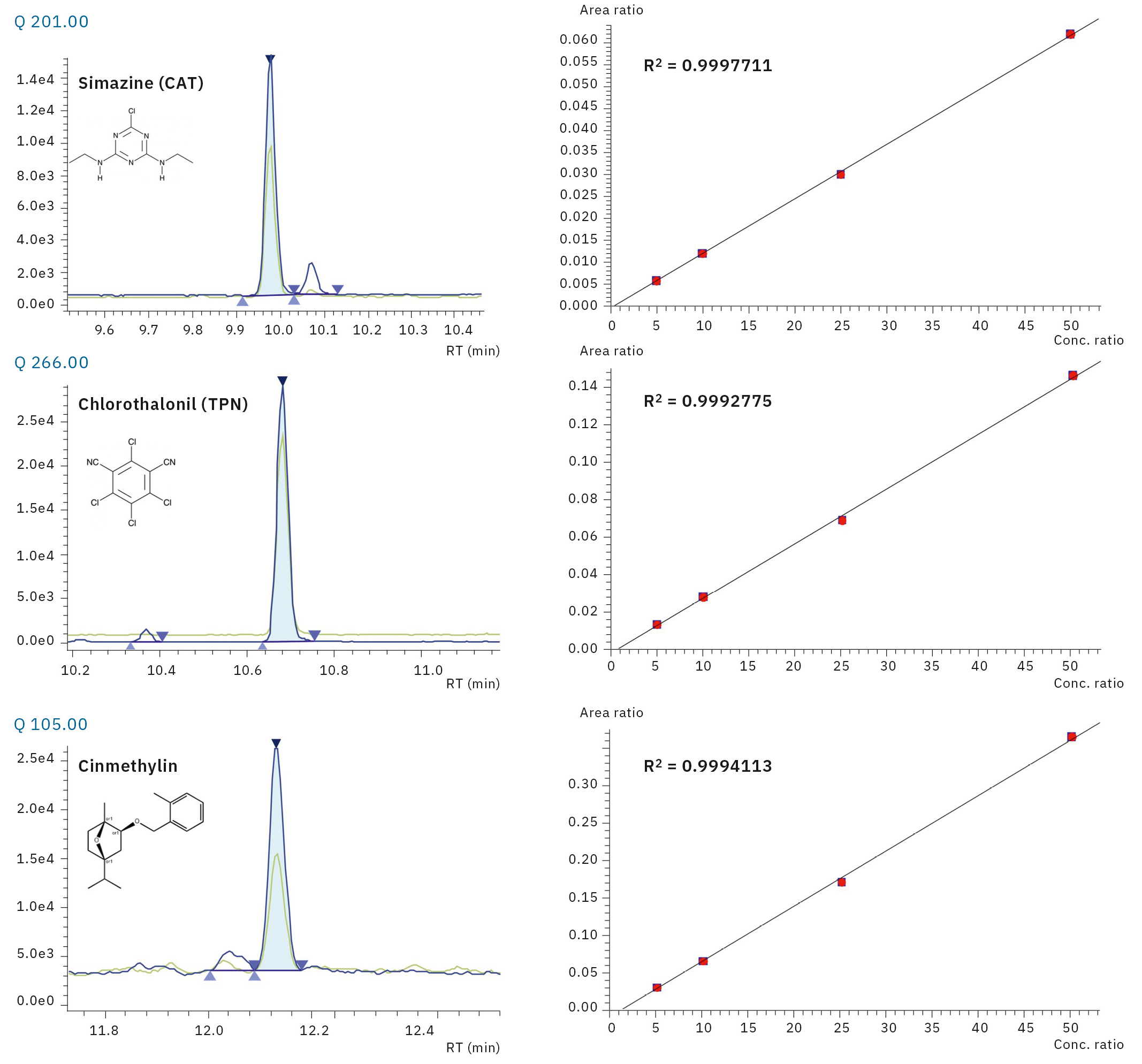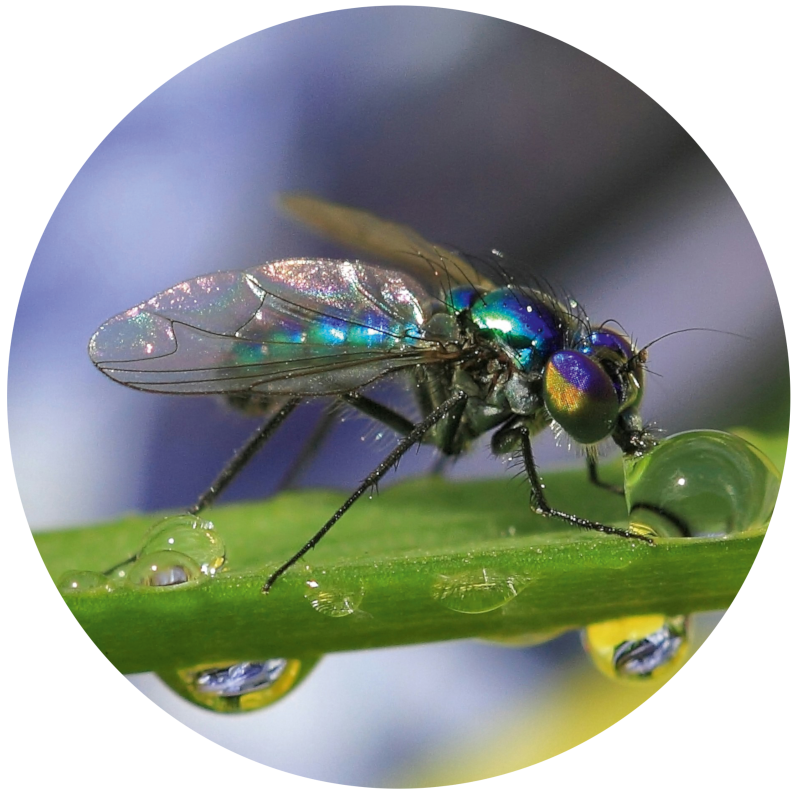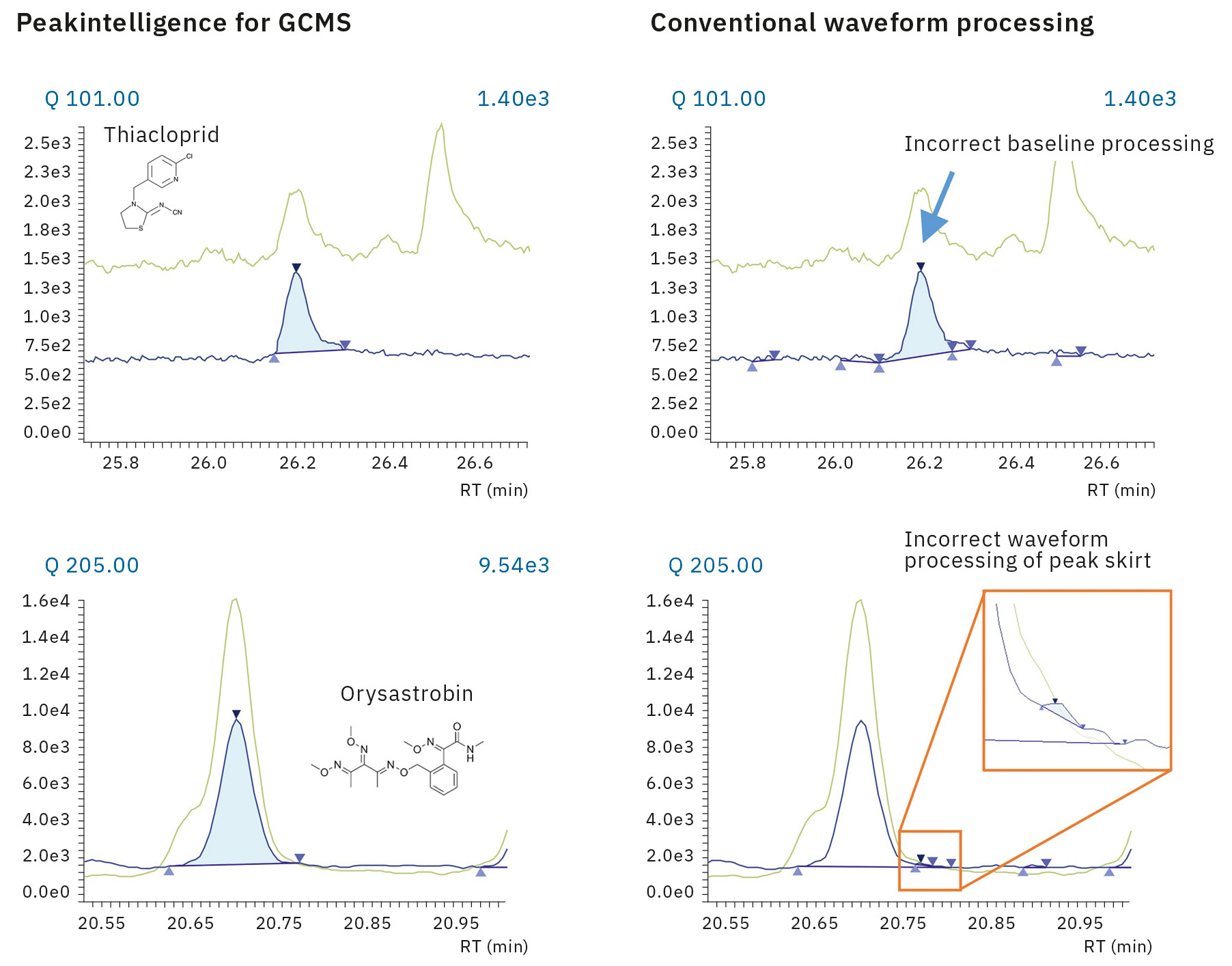Simultaneous analysis of pesticides in water using AI peak integration
Peakintelligence™ for GCMS
Waldemar Weber, Shimadzu Europa GmbH




The global problem of water pollution is jeopardizing the collective health. It occurs when harmful substances like chemicals or microorganisms contaminate oceans, lakes, streams, rivers or any other body of water, degrade water quality and render it toxic for humans, animals or the environment. In order to measure the multitude of pesticides and toxins in water, the multi-component simultaneous analysis of GC-MS is used. Among the tasks for chromatographers, peak integration is the one that has some difficulty to fit in. Most of the public methods or official analytical documents rarely define a strict rule for peak integration. Therefore, peak integration may be a process that has a risk for missing sufficient analytical objectivity. Peakintelligence™ for GCMS is an option software for LabSolutions Insight™ GCMS, which is trying to resemble the way of peak integration by professionals. This is totally independent of person, because there are no parameters for peak integration.
Protecting human health as a number one priority
The regulation of chemical substances in environmental water and drinking water is of global importance in order to protect human health and the health of animals and plants. A particular focus lies on agricultural chemicals or agrochemicals, referring to biocides (pesticides including insecticides, herbicides, fungicides and nematicides) and synthetic fertilizers. These agrochemicals are widely used worldwide to control weeds and insect pests and have the risk of eluting into the soil and water resources. GC-MS, thanks to its superior performance in multi-component simultaneous analysis, is utilized to measure the wide array of pesticides in water. Its new, higher efficiency adds to its performance and takes the shortage of operators and reduction of training costs into account making it the new state-of-the-art commodity in the modern business environment. The GCMS-QP2050 represents a new generation of GCMS with a completely new ion optical system and boasts high sensitivity, quantitative analysis performance and durability. High productivity and reliability support the work of operators. Below, an example of an analysis of agricultural chemicals in water utilizing the GCMS-QP2050 entry model is described, which offers excellent cost performance and AI peak integration.
Samples and analysis conditions
Mixed standard solutions with concentrations of 0.003, 0.005, 0.01, 0.025, 0.05, 0.1 and 0.5 mg/L were prepared by diluting standard agricultural chemical samples containing 140 types of agricultural chemicals in water. The internal standard samples used at this time were anthracene-d10, 9-bromoanthracene and chrysene-d12. Repeated verification of analytical accuracy was carried out at a concentration of 0.005 mg/L. A GCMS-QP2050 entry model was used with an AOC-30i as autoinjector (Figure 1). Table 1 shows the conditions used in this analysis.
|
System |
|
|
GCMS model |
GCMS-QP2050 entry model |
Autosampler |
AOC-30i |
Column |
SH-I-5Sil MS (30 m x 0.25 mm ID x 0.25µm); P/N 221-75940-30 |
Insert |
Topaz Liner Splitless Simgle Taper; P/N 227-35008-01 |
|
GC conditions |
|
Injection mode |
Splitless |
Injection volume |
2 µL |
Carrier gas |
He |
Carrier gas control |
Constant velocity (44.5 cm/s) |
Column temperature |
80 °C (2 min) → 20 °C/min → 180 °C → 5 °C/min → 300 °C (3 min) |
|
MS conditions |
|
Ion source temp. |
230 °C |
Interface temp. |
250 °C |
Data acquisition mode |
SIM |
Peakintelligence for GCMS
The multi-analyte quantitation software LabSolutions Insight was used in the data analysis, and Peakintelligence for GCMS was used as the algorithm for peak waveform processing. Peakintelligence is a new AI peak integration algorithm that uses machine learning to simulate the peak integration of experience operators. Peak integration using Peakintelligence does not require parameter setting by the operator and can achieve peak integration results equal to that of experienced operators (Figure 2).
Results of quantitative analysis
Figure 3 shows the SIM chromatograms at 0.005 mg/L and calibration curves of representative pesticides. Even at this low concentration, sensitivity with a sufficient margin of performance and satisfactory linearity of the calibration curves were achieved by using the GCMS-QP2050. Table 2 shows the repeatability (%RSD, n = 5) of the area ratio of the target pesticides in this analysis. Good results within 5 % were obtained for the repeatability of all compounds.

|
Compound |
%RSD |
Compound |
%RSD |
Compound |
%RSD |
Compound |
%RSD |
Compound |
%RSD |
Compound |
%RSD |
|
Dichlorvos (DDVP) |
1.8 |
Tolclofos-methyl Oxon |
1.8 |
Esprocarb |
2.3 |
Captan |
2.3 |
Buprofezin |
2.1 |
Indanofan |
2.7 |
|
Dichlobenil (DBN) |
1.5 |
Benfuresate |
0.8 |
Malathon (Malathion) |
2.4 |
Dimepiperate |
1.8 |
Isoxathion |
2.1 |
Bifenox |
1.7 |
|
Etridiazole (Echlomezol) |
2.4 |
Fenitrothion Oxon |
3.0 |
Chlorpyrifos Oxon |
2.9 |
Procymidone |
1.9 |
Cyproconazole |
1.5 |
Anilofos |
3.3 |
|
Trichlorfon (DEP) |
3.3 |
Dichlofenthion (ECP) |
2.3 |
Quinoclamine (ACN) |
1.8 |
Butamifos Oxon |
1.7 |
MPP Sulfoxide |
2.2 |
Orysastrobin |
2.5 |
|
Chloroneb |
1.3 |
Propanil (DCPA) |
2.8 |
Metolachlor |
0.8 |
Triflumizole |
2.4 |
(Z)-Pyriminobac-methyl |
2.9 |
Furametpyr |
2.6 |
|
Isoprocarb (MIPC) |
2.0 |
Terbucarb (MBPMC) |
1.0 |
Chlorpyrifos |
2.9 |
Methidathion (DMTP) |
3.2 |
Endosulfan β |
2.0 |
(5Z)-Orysastrobin |
2.9 |
|
Molinate |
1.3 |
Metribuzin |
2.8 |
Thiobencarb |
1.3 |
Propaphos |
2.0 |
MPP Sulfone |
3.3 |
Iprodione Metabolite |
2.5 |
|
Fenobucarb (BPMC) |
1.6 |
Bromobutide |
2.7 |
(Z)-Dimethylvinphos |
1.6 |
Tetrachlorvinphos (CVMP) |
3.6 |
Mepronil |
2.5 |
Phosalone |
2.3 |
|
Propoxur (PHC) |
1.3 |
Chlorpyrifosmethyl |
2.6 |
Cyanazine |
2.0 |
Paclobutrazol |
1.0 |
Chlornitrofen (CNP) |
2.5 |
Pyriproxyfen |
1.6 |
|
Trifluralin |
3.2 |
Malaoxon |
2.3 |
Fenthion (MPP) |
2. |
Butachlor |
1.9 |
Ediphenfos |
1.9 |
Mefenacet |
4 |
|
Benfluralin (Bethrodine) |
3.2 |
Simeconazole |
2.8 |
Chlorthal-dimethyl (TCTP) |
1.3 |
Endosulfan α |
1.9 |
Endosulfate |
1.9 |
Cyhalofop-butyl |
3.6 |
|
Cadusafos |
2.5 |
Tolclofos-methyl |
2.1 |
Isofenphos Oxon |
3.3 |
Butamifos |
2.7 |
Propiconazole -1 |
2.6 |
Pyraclofos |
1.7 |
|
Pencycuron |
1.7 |
Alachlor |
1.9 |
Tetraconazole |
2.7 |
Napropamide |
0.6 |
(E)-Pyriminobac-methyl |
2.6 |
Etobenzanid |
1.3 |
|
Dimethoate |
2.6 |
Simetryn |
1.6 |
Fthalide |
1.9 |
Flutolanil |
2.6 |
Propiconazole -2 |
3.2 |
Cafenstrole |
1.8 |
|
Simazine (CAT) |
2.9 |
Ametryn |
2.4 |
Fosthiazate -1 |
2.8 |
(E)-Metominostrobin |
1.9 |
EPN Oxon |
2.8 |
Boscalid |
2.1 |
|
Atrazine |
1.8 |
Metalaxyl |
1.7 |
Fosthiazate -2 |
1.9 |
Prothiofos |
1.8 |
Thenylchlor |
3.3 |
Etofenprox |
1.0 |
|
Diazinon Oxon |
2.7 |
Prometryn |
2.6 |
Thiamethoxam |
2.6 |
Isoprothiolane (IPT) |
1.4 |
Tebuconazole |
0.8 |
Thiacloprid |
1.2 |
|
Cyanophos (CYAP) |
2.4 |
Cinmethylin |
2.5 |
Pendimethalin |
2.3 |
Isoxathion Oxon |
2.5 |
Pyributicarb |
1.7 |
Difenoconazole-1 |
2.6 |
|
Propyzamide |
1.8 |
MPP Oxon |
3.4 |
Cyprodinil |
2.1 |
Pretilachlor |
1.7 |
Acetamiprid |
1.7 |
Difenoconazole-2 |
2.4 |
|
Diazinon |
1.7 |
Dithiopyr |
1.2 |
Dimethametryn |
2.7 |
Uniconazole-P |
2.0 |
Pyridaphenthion |
2.0 |
Pyrazoxyfen |
3.4 |
|
Pyroquilon |
2.0 |
Pirimiphos-methyl |
2.4 |
Isofenphos |
1.8 |
MPP Oxon Sulfoxide |
2.0 |
Iprodione |
2.2 |
||
|
Chlorothalonil (TPN) |
1.8 |
Fenitrothion (MEP) |
2.3 |
Methyldymron |
1.5 |
Thifluzamide |
3.4 |
EPN |
2.8 |
||
|
Disulfoton (Ethylthiomethon) |
4.4 |
Bromacil |
2.8 |
Prothiofos Oxon |
1.7 |
MPP Oxon Sulfone |
1.9 |
Cumyluron |
2.9 |
||
|
Iprobenfos (IBP) |
3.3 |
(E)-Dimethylvinphos |
2.6 |
Phenthoate (PAP) |
2.1 |
CNP-amino |
2.4 |
Piperophos |
2.2 |
Peak integration by Peakintelligence for GCMS
The results of peak integration by the AI-based software Peakintelligence for GCMS and conventional peak integration by Shimadzu Chromatopac were compared (Figure 4). In conventional peak integration, there were cases in which integration was incorrect, for example, in the low concentration region and when small neighboring peaks exist. In contrast, proper peak integration was possible with Peakintelligence even with these chromatograms. Thus, peak integration by Peakintelligence not only reduces the time required for correction of peak integration but also makes it possible to obtain highly reliable quantitative analysis results by eliminating individual differences between operators.
Immaculate results thanks to excellence sensitivity and Peakintelligence
The GCMS-QP2050 entry model achieved excellent sensitivity and quantitative analysis accuracy in a multi-component simultaneous analysis of pesticides in water. In peak integration, highly accurate results were obtained, and processing time was substantially reduced by using the AI-based software Peakintelligence for GCMS. It may also be noted that the GCMS-QP2050 demonstrates high performance when hydrogen is used as the carrier. In that case, selection of a turbomolecular pump (TMP), which enables a higher evacuation rate, is recommended. The GCMS-QP2050 with its superior performance in multi-component simultaneous analysis and higher efficiency hereby contributes to identifying pesticides in water and creates the basis for purification and a cleaner and safer environment.
